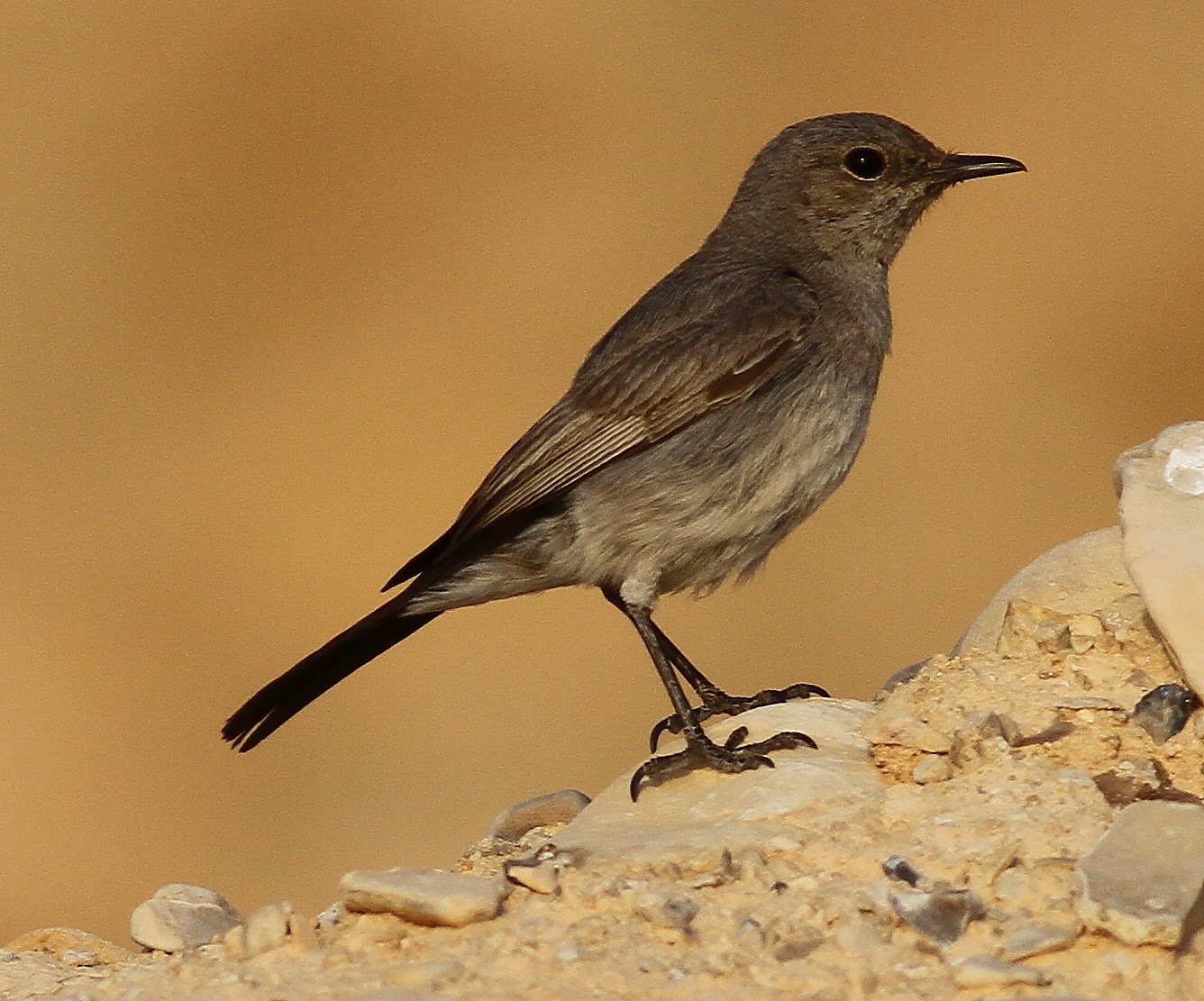Most people have probably heard of the Great Rift Valley in East Africa which is very obvious as you travel around a country like Kenya. However, this is only one small part of the Great Rift Valley which starts in Northern Mozambique & finishes in Syria. It passes through the length of Israel including the Hula Valley, the Dead Sea & continues along the length of the Red Sea starting at Eilat. It was a pre-dawn start to get further up the Dead Sea from our accommodation to Wadi Salvadora to look for Striolated Bunting & an outside chance of Sinai Rosefinch.
Striped Hawk Moth: Thinking of getting a drinks machine installed in the garden in the hope that will be a better attraction for this scarce migrant than my MV moth trap
Sunrise over Jordon
The Striolated Bunting site: This is a dry rocky wadi rising steadily into the hills above the main road North of En Gedi
The lower part of the site overlooks the Dead Sea
Distant view of the Dead Sea: It's so saline, that there are no birds, not even the usually tolerant Flamingos living there
Sand Partridge: This is the nominate heyi subspecies which ranges from the Jordon Valley to the Sinai & NW Saudi Arabia
Desert Lark: This is the deserti subspecies which is the resident subspecies in the Dead Sea area
Rock Martin: This is the obsoleta subspecies which ranges from Egypt to Iran
Rock Martin: A couple of days later, some lucky Brits were photographing a Crag Martin in Yorkshire which I've still to see in the UK
Lesser Whitethroat
Rock Martin: This is the obsoleta subspecies which ranges from Egypt to Iran
Rock Martin: A couple of days later, some lucky Brits were photographing a Crag Martin in Yorkshire which I've still to see in the UK
Lesser Whitethroat
White-crowned Black Wheatear: This is the ernesti subspecies which occurs from Egypt to the Dead Sea, Saudi Arabia, Iraq & SW Iran
Fan-tailed Raven: One of the best Corvid shapes to my eyes
Fan-tailed Raven & Steppe Buzzard: This Steppe Buzzard didn't follow the ridge line & quickly got put right by the Fan-tailed Raven
Fan-tailed Raven & Steppe Buzzard: This Steppe Buzzard didn't follow the ridge line & quickly got put right by the Fan-tailed Raven
Tristram's Grackle
Tristram's Grackle: They were full of character & would suddenly appear right next to us to check us out for a minute or two, before disappearing down the wadi. When this happened they had no respect for whether they would fit in the 400mm lens
Tristram's Grackle: They were full of character & would suddenly appear right next to us to check us out for a minute or two, before disappearing down the wadi. When this happened they had no respect for whether they would fit in the 400mm lens
Striolated Bunting: This used to be lumped with House Bunting found in Morocco and North West Sub-Saharan Africa, but these days it is consider to be a separate species
Rock Hyrax: Told you we were in the Great Rift Valley. The last ones I saw were in Kenya
Rock Hyrax: I couldn't resist another photo
As the temperatures rose, we started seeing a steady Northerly passage of Raptors over the cliffs above, along with the occasional Black Stork party. Being our first full day in Israel, we didn't appreciate until later in the trip this was the heaviest Raptor passage we were to encounter.Rock Hyrax: I couldn't resist another photo
Black Stork
Black Kite: The commonest Bird of Prey on the move this morning
Egyptian Vulture: Adult. Not surprisingly, with the name Egyptian Vulture, this is the nominate percnopterus subspecies
Griffon Vulture: This is the nominate fulvus subspecies, rather than the fulvescens subspecies photographed in Gurajat in Jan (see Final Afternoon at CEDO)
Short-toed Eagle: One of the few Raptors to come over low
Black Kite: The commonest Bird of Prey on the move this morning
Egyptian Vulture: Adult. Not surprisingly, with the name Egyptian Vulture, this is the nominate percnopterus subspecies
Griffon Vulture: This is the nominate fulvus subspecies, rather than the fulvescens subspecies photographed in Gurajat in Jan (see Final Afternoon at CEDO)
Short-toed Eagle: One of the few Raptors to come over low
Steppe Buzzard: The vast majority of the passage birds are the Eastern European vulpinus subspecies of Buzzard (although the nominate buteo is a winter visitor to Israel)
Steppe Buzzard: Sometimes they came over in parties
Finally, it was time to head off for some drinks & shade. A drinks stop at En Gedi, next to the Dead Sea, produced an unexpected Striped Hawk Moth, sitting inside a cooled drinks machine. Once rescued, it was photographed & released back into the warm.Steppe Buzzard: Sometimes they came over in parties
Pied Wagtail: This is the nominate alba subspecies which is often known in the UK as White Wagtail to separate it from the British race
Pied Wagtail
Pied Wagtail































